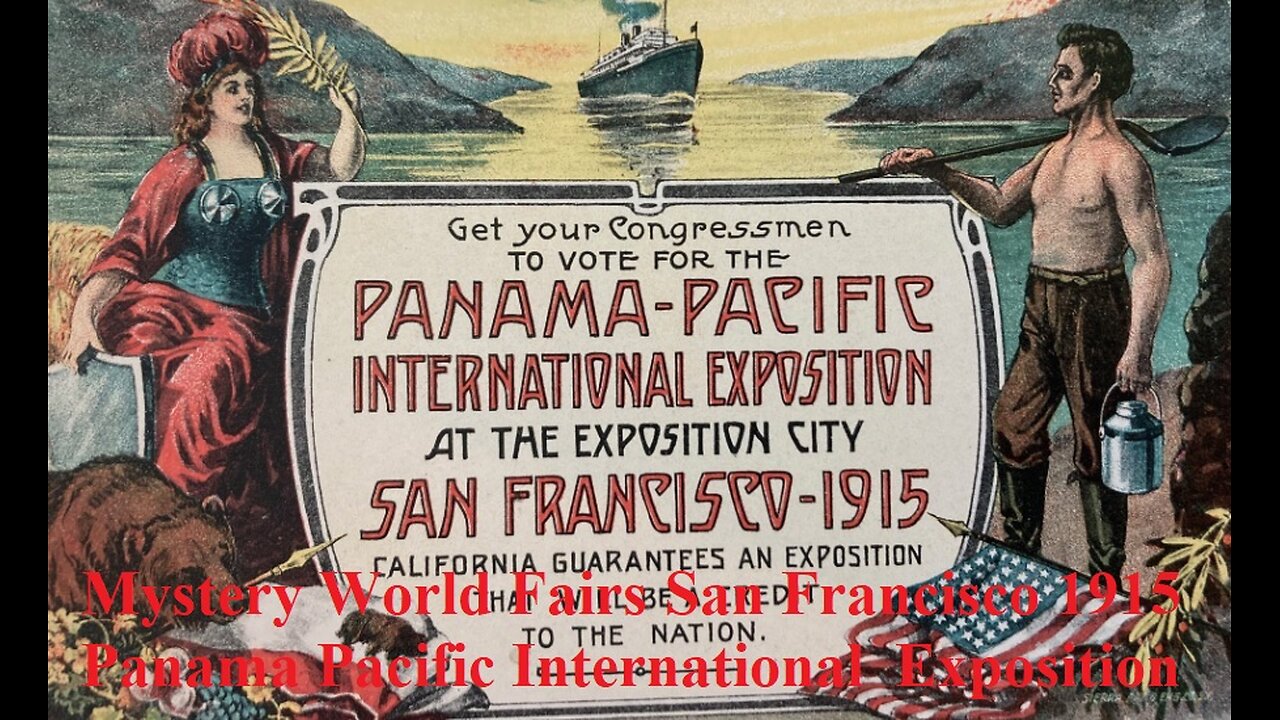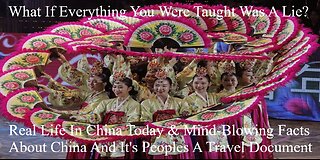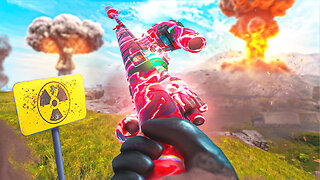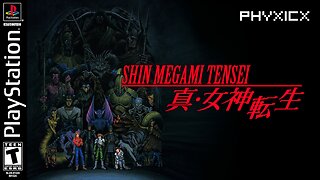Premium Only Content

Mystery The World's Fairs San Francisco 1915 Panama-Pacific International Exposition
Mystery The World's Fairs Maybe the History we've been told is a lie! Were some ancient buildings built by a different race and their true history was covered up? Did ancient peoples have advanced forms of technology that have now been forgotten ? Was the massive kingdom of Tartaria visible on ancient maps much more advanced than we realize? This sub is an open forum for collaborative discussion of all topics "Tartaria" related, including Mud Flood, Tesla, AntiquiTech, Free Energy, Conspiracies, Hidden History, etc.
I wonder if this video has been posted here before? If yes, then i am not sorry for posting it again, because its just one helluva epic video. If not, I highly recommend watching it if you are interested in perhaps how Tartarian technology worked. I am still thinking about all the stuff he said and points out to us. As its a lot to deal with and can shake one up. I find it fascinating though.
Could it be that this civilization, split off from our official historical line of development, is behind many of the events of the 20th century?
And what of the World's Fairs? Were a large proportion of the World's Fair Buildings actually built from scratch, as the official historiography claims? There is much to suggest that the robber barons of the industrial age not only hid once widespread technological knowledge from us, but that they also hijacked some of the impressive architectural masterpieces in which parts of this knowledge was displayed.
Some of the buildings from the World's Fairs still exist today, and they are obviously not made of plaster or similar fragile materials. Were they subsequently rebuilt to be permanent structures? Is it even possible that the elaborately designed Expo sites were built with the technological capabilities of the time within just a few months, only to be destroyed again a few months later after the exhibitions had ended? Or is it plausible that after a great catastrophe the worldwide remains of the preceding high culture were not only systematically destroyed, but also pressed into an image of history imposed on us?
Some available information suggests that even after the worldwide, game-changing event we call the Reset or Mud Flood, there still remained countless complete and beautiful cities that were conquered by a new power elite and then repurposed as "World's Fairs".
Especially in America, the so-called New World, the many Greco-Roman cities would have been difficult to explain because in contrast to Europe, the Americas do not have an official greco-roman history.
The more carefully one investigates, the more difficult it becomes to find plausible explanations for the construction and destruction of these extraordinary and huge exhibition areas.
The official version about the World's Fairs can be summarized as follows: People in the 19th century loved Greco-Roman architecture for reasons unknown, so it was extremely important to the architects who organized the World's Fairs between 1850 and about 1914 to build in a classical style.
(Note: With World War I, classical architectural ambitions in Europe ended abruptly and many exhibitions also did not take place as planned. It was only in the wake of fascism that there was a return to ancient design principles, but these were often implemented superficially and were mainly applied to a few representative magnificent buildings. After the Second World War, on the other hand, classical architecture was deliberately replaced with new trends - e.g. Bauhaus and Brutalism. Officially the intention was to create an aesthetic distance to fascism, but in all likelihood its purpose was to cut the connection to the Old World through soulless, brutalistic architecture.)
No effort was spared for the world's fairs, enormous amounts of work went into creating complex statues, ornaments, columns, parks, buildings, and even the world's largest organs. No expenses were spared in the making of these massive structures. Made of plaster and linen or hemp fibers, they were only intended to last for the duration of the Expo. However the attention to detail was so great that purely visually there seemed to be no difference between the Expo buildings and the classical splendor-buildings of antiquity. The purpose of the World's Fairs was to make the supposedly "new" technologies discovered during the Industrial Revolution palatable to the masses, to create new markets. In the end, most of the buildings were torn down, with only meadows or empty parks remaining.
The Panama-Pacific International Exhibition In 1915, San Francisco hosted the world's fair called the Panama Pacific International Exposition.
The vast fair, which covered over 600 acres and stretched along two and a half miles of water front property, highlighted San Francisco’s grandeur and celebrated a great American achievement: the successful completion of the Panama Canal. Nine years earlier, San Francisco experienced a terrible earthquake, declared one of America’s worst national disasters. The city overcame great challenges to rebuild and by the time the Exposition opened in 1915, the city was ready to welcome the world.
Between February and December 1915, over 18 million people visited the fair; strolling down wide boulevards, attending scientific and educational presentations, “travelling” to international pavilions and enjoying thrilling displays of sports, racing, music and art. The fair promoted technological and motor advancements: the Panama-Pacific International Exposition was the first world’s fair to demonstrate a transcontinental telephone call, to promote wireless telegraphy and to endorse the use of the automobile. Each day, the fair highlighted special events and exhibits, each with their own popular souvenirs. The fair was so large and spread out over such a length of land that it was virtually impossible for any visitors to successfully see it all, even over the course of several visits.
One hundred years later, the Exposition’s legacy is still evident in San Francisco. A few of the city’s buildings were either rebuilt or designed in the style of the Exposition, like the Marina’s Palace of Fine Arts or Lands Ends’ Legion of Honor. The fair’s location and design also required significant landscape changes, including the filling-in of acres of waterfront marshland. Today, the Marina Green and Crissy Field, two of the city’s most popular recreational open spaces, are products of these landscape changes.
When the Panama Pacific International Exposition opened in 1915, European nations were already entangled in the First World War. The annihilation of the old monarchies had begun, the European continent was being reshaped, and all areas of government, society, economy, and culture were undergoing fundamental change. The city of San Francisco itself was just recovering from the terrible earthquakes and fires that had raged in 1906 - yet in the midst of these hectic times an exposition, unimaginably large by today's standards, opened its doors to celebrate the completion of the Panama Canal in August 1914. The fairgrounds covered 600 acres and two and a half miles along the waterfront, receiving nearly 20 million visitors between Feb. 20 and Dec. 4, 1915, making it one of the most successful expositions of the time. Because of its size and expansive grounds, it was virtually impossible for guests to see the entire fair, even after multiple visits.
Most of the buildings, it is said, were made of wood, plaster and linen fiber in order to keep costs as low as possible and to be able to demolish them quickly once the World's Fair was over. However, if we take a closer look at some of the photos of these brand new buildings, doubts about the official story quickly arise. Many buildings, for example, show signs of age shortly after completion and appear to be heavily eroded - such as the "Fountain of the Earth".
If the official origin story is coherent, shouldn't these buildings have looked brand new? Instead, from the very beginning, we are looking at ancient monuments that might as well have come from the fabled Atlantis or ancient Rome.
The architect of the Palace of Fine Arts, Bernard R. Maybeck, is quoted as saying that every great city needs ruins. That's why the Palace was supposed to fall into disrepair after the Expo ended, some of whose structures were really only meant to last for the duration of the exhibition. It is said that even as it was being built, it was inspired by Roman overgrown ruins, in keeping with the mood of 18th-century Piranesi engravings, who became famous for painting ruins.
Prologue to the Panama-Pacific International Exposition The Significance of the Panama Canal
The construction of the Panama Canal (1902-1914) represented one of the worlds' most ambitious engineering feats. During the 19th century, international trade depended heavily on shipping to transport different countries' goods around the world. Ships traveling from New York City to San Francisco had to sail all the way down the east coast of North and South America, navigate around Chile's dangerous Cape Horn and then come back up the west side of the two continents. Eager to connect the Atlantic Ocean to the Pacific Ocean and to reduce this lengthy travel time, engineers identified the narrow Panama isthmus in Central America as an ideal location for an interlocking canal. In the 1880s, a French construction company attempted to build the canal as a business investment opportunity. The overwhelming construction project required thousands of men to dig eleven miles with primitive tools through disease-ridden swamps. Under the French company, the project lagged on for years, plagued with engineering disasters, rampant diseases and financial mismanagement.
When U.S. President Teddy Roosevelt took office in 1901, he identified the canal as critical to the American people and established it as a top national priority. Through various political and financial events, the U.S. took over the construction in 1902. The U.S. assigned a new construction commission to improve both the engineering methods and the significant health issues related to the canal construction. Under American supervision, the canal construction was finally successful and the Panama Canal officially opened for shipping business in 1914. For many Americans, the Panama Canal represented the country's ability to get the job the done.
San Francisco as the next world's fair location
Grand international expositions and world's fairs were very popular during the 19th century. The fairs, including such locations as England (1851), Vienna (1873), Paris (1889), Chicago (1893) and St. Louis (1904), brought prestige, tourism and new business opportunities to their cities. By the turn of the 19th century, San Francisco was a thriving city filled with elegant neighborhoods, decorative parks and a bustling economy. In 1904, a successful San Francisco mercantile tycoon named Rueben Hale and his powerful merchant association proposed that San Francisco should be the next city to host an international exposition. Needing a defining historic theme for their fair, the San Franciscans proposed that the exposition should celebrate the opening of the Panama Canal. Considering that by 1904, the Panama Canal was far from finished, their proposal was particularly ambitious and forward thinking.
Rueben Hale and his merchant associates asked Congress in 1904 for $5 million dollars seed money to create an exposition in San Francisco. Congress delayed its decision and the plans for the fair stalled. Then on April 1, 1906, disaster struck San Francisco with a giant earthquake. The subsequent fires destroyed much of the downtown and entire residential neighborhoods, leaving thousands homeless. Despite the significant loss of their businesses, Hale and his associates banded together and slowly rebuilt their shops and regained their economic stability. They did not abandon the idea that San Francisco was a great city, worthy of a world's fair. The merchants and the city leaders persevered through tragedy and by December of 1906, they had created the Panama Pacific Exposition Company to make the dream of the worlds' fair a reality.
Making the Exposition Possible: Politics & Location
Once created, the Panama Pacific Exposition Company and its board of directors, made up of some of San Francisco's most powerful and influential politicians' and businessman, got down to the task of making the fair a reality. They launched successful public and private fundraising efforts to support their international fair proposal. By this time, Washington DC, Boston and New Orleans were also lobbying Congress to be the host city for this fair. After an aggressive public relations campaign and the promise that the city would not accept any federal funding, San Francisco was awarded the final bid. On February 15, 1911 President Taft sign a resolution designating San Francisco as the official home of the future Panama Pacific Exposition and after the ground-breaking ceremony, President Taft called San Francisco "the city that knows how."
With only four years remaining to design and build the entire fair, the directors of the company had an enormous task ahead of them. Their most significant decision was where to hold the fair. After considering many sites, including Twin Peaks, Lake Merced, the Mission, Golden Gate Park and Oakland, the company chose the largely-undeveloped Harbor View area (now the Marina) because it afford spectacular views of the Bay while still close to many neighborhoods. This waterfront location still came with challenges. The company would have to purchase over 75 city blocks and demolish over 200 buildings and they would have to fill in the marshland. Most important politically, the Panama Pacific Exposition Company would need to gain permission from the U.S. Army to build on both the Presidio and Fort Mason land.
The Country's Best Designers for the Fair
The Panama Pacific Exposition Company assembled a team of the county's best and most experienced architects, designers, landscape architects, artists and engineers to create a design worthy of an international exposition. The exposition's chief architect was George W. Kelham, the San Francisco architect who had experience with the design the Paris Exhibition of 1900. Other famous architects involved in the master planning and building design included Bernard Maybeck and the influential New York firm of McKim Mead &White. John McLaren, the designer of the Golden Gate Park, was the master landscape designer.
Kelhman and his architectural team laid out a classic, symmetrical design of eight large exhibition palaces clustered around decorative courts and avenues. The Palace of Machinery on the east and the Palace of Fine Arts on the west flanked the palaces on either side. The shining centerpiece was the Tower of Jewels, the decorative Italianate tower covered in multicolored cut glass. The international and national pavilions, as well as the race track, were located on the Presidio and the Amusement Zone was located on Fort Mason property.
The creation of the Panama-Pacific International Exposition required the construction of a grand and elegant city that was only to last eleven months. Almost all of the fair buildings were constructed in wood frame and covered in a material composed of gypsum (plaster of Paris) and hemp, was designed to look like Italian marble. As the Chief of Color, Jules Guerin designed a palette of soft and harmonious paint colors that would enhance the imitation travertine. In studios, commissioned artists and workers constructed over 1,500 individual sculptures with wood, wire and the faux marble material. The fair's ongoing vegetation and landscape needs were intensive. The landscape architects had to ship in over 30,000 full-grown trees and thousands of shrubbery to turn the acres of sand dunes and landfill into sophisticated, large-scale gardens.
Once fully constructed, the entire exposition covered over 600 acres and came to a total construction cost of $15 million dollars. Due to the excellent planning and cooperation from San Francisco and its labor organizations, the Panama-Pacific International Exposition opened to the public both on-time and within budget –a first in world's fair history.
Legacy of the Panama-Pacific International Exposition The Success of the Fair
By the time that the Panama-Pacific International Exposition officially closed on December 4 1915, over 18 million people had visited the fair. On the last day of operation, the fair experienced a record-setting 450,000 visitors. While the Exposition took in over $27 million dollars in receipts, the Exposition Company only made a modest profit of approximately $1,300,000 as the huge construction and production costs exceeded $25 million dollars.
From Rubble to Riches: The World's Fair That Raised San Francisco From the Ashes. When the Panama-Pacific International Exposition opened in 1915, San Francisco looked fabulous: Bedecked with ornate, European-inspired architecture and an array of technological wizardry, the city resumed its role as a West Coast powerhouse less than a decade after near-total destruction. Block after block of property flattened by the 1906 earthquake and ensuing fires had been transformed to make way for glitzy new hotels, sturdy apartment buildings, landscaped parks and courtyards, offices, theaters, and a sparkling, gold-topped City Hall. New streetcar lines were built to carry visitors and locals to the fair, much of which rose on previously uninhabitable lots along the city’s northern waterfront. The Panama-Pacific International Exposition showed the world that the city had reached new heights of grandeur, launching the modern incarnation of San Francisco like a phoenix from the ashes.
The concept of a world’s fair wasn’t new to San Francisco, as several exhibitions had been proposed during the late 19th century. In 1894, the city hosted the California Midwinter Exposition, which brought many of exhibits from the Chicago Columbian Exposition to the West Coast. Then in 1909, a few years after the city’s devastating earthquake, the Portolá Festival provided the community its first opportunity to show that San Francisco was getting back on her feet. But the Panama-Pacific International Exposition (PPIE) of 1915, an idea that had been forming since the 1890s, finally put a global spotlight on the city, as it celebrated the Panama Canal’s completion and its impact on travel and trade throughout the Western Hemisphere.
“San Francisco was just 9 years out from the earthquake and fire, so the incredible rebuilding effort mirrored the tremendous feat of engineering that the canal required,” says curator Erin Garcia, who organized the “City Rising” exhibition for the California Historical Society. “There was also this symbolic, historical connection for many people who came to San Francisco in the middle of the 19th century during the Gold Rush from the East Coast and from Europe, sailing around Cape Horn or traveling overland via the Isthmus of Panama. The opening of the Panama Canal obviously made this journey much simpler, reinstating San Francisco as the West Coast’s port of call and the new center for commerce in the Pacific, particularly with Europe and Asia.”
After almost 80 percent of the city was leveled following the 1906 quake, city leaders realized that a global exposition would help incentivize rebuilding and give the community a tangible goal for recovery. “Images of the city destroyed were so powerful, and this is what people elsewhere thought of San Francisco,” says Laura Ackley, whose new book, “San Francisco’s Jewel City: The Panama-Pacific International Exposition of 1915” is the first modern, comprehensive volume to cover the 1915 world’s fair. “Not only would continuing with plans for the fair replace San Francisco’s damaged image in the eyes of the world, it could also be a lynchpin around which the people of the city and region could rally.”
Before San Francisco could plan its fair around the opening of the Panama Canal, the city had to win popular support over other municipalities, particularly New Orleans and San Diego. The Portolá Festival helped prove that the city was ready for an influx of guests, and since the bulk of California’s population resided in the northern portion of the state, San Diego was easily bested. (San Diego was eventually provided state funds to produce the much-smaller but similarly titled Panama-California Exposition, which also debuted in 1915 and offered visitors enticement to see more of the Golden State.) New Orleans took the fight to Congress in 1911, but San Francisco’s fundraising powers and the support of President Taft helped the city by the bay win federal approval.
On the ground in San Francisco, a group of influential locals had formed the PPIE board of directors, putting their financial power behind the world’s-fair pitch. “You had this coalition of businessman and politicians, including congressman Julius Kahn, Mayor James Rolph, Charles C. Moore, and others that are all working their angles to make the giant undertaking a reality,” explains Ackley. Moore, the businessman who convinced nine countries to send representative ships for the Portolá Festival in 1909, was appointed president of the fair by the board.
To pay for this massive undertaking, California voted to institute a new statewide tax and San Francisco established a citywide bond, both of which added to the primary funds raised by selling PPIE stock subscriptions. The PPIE board eliminated potential sites at Golden Gate Park and Lake Merced for being too destructive and costly, settling on a marshy plot bordering the Presidio near the mouth of the San Francisco Bay. Known today as the Marina, at the time the neighborhood was a sparsely populated area called Harbor View, which encompassed more than 400 existing properties and a 71-acre tidal lagoon. The lagoon was filled, utilities were extended, and the owners of existing buildings onsite were compensated so they could be moved or demolished.
Though nearly a hundred earthquake shacks housing low-income residents had been located in Harbor View, their owners were evicted after their homes were condemned by the Department of Health, which was in collusion with fair organizers. “The Harbor View area had been the site of the largest earthquake refugee camp, called Lobos Square,” Garcia says. “By the time they started building the fair, a lot of the earthquake shacks had been moved to nearby lots by their owners, and those shacks were demolished to make way for the PPIE, which certainly had a negative impact on the tenants.”
By the time of the fair’s opening in February of 1915, most evidence of San Francisco’s great earthquake was gone. The gorgeous new City Hall was nearly finished along with the broad Civic Center plaza and Exposition Auditorium (known today as the Bill Graham Civic Auditorium), which was one of the few PPIE buildings constructed as a permanent gift to the city. The Parisian proportions of San Francisco’s new Civic Center were some of the few elements that survived from architect Daniel Burnham’s 1906 master plan for San Francisco, which was completed just a few months before the city burned to the ground; most of the broad boulevards, parks, and classical public buildings set forth in Burnham’s proposal were scrapped during the initial rush to rebuild.
Most of the 1906 damage was due to fires that spread quickly through downtown, hence the PPIE organizers were especially worried about preventing conflagrations at the fair. “That was actually one of the deciding factors for Harbor View, the proximity to the bay made it easier to defend against fire,” says Ackley. “In addition, the exposition had an elaborate fire alarm system including a complete, dedicated fire department and a system of ‘Aero Alarms.’ Each used wire tubing containing air that would expand and trip a signal if it got too hot. They were so sensitive that just before the fair opened, one alarm was triggered by a lamp placed too near to one of the tubes.” The fair built three onsite firehouses to work in conjunction with closely spaced hydrants, an automated sprinkler system, and two fireboats.
Yet as the exposition was gaining momentum, growing hostilities in Europe were also leading to World War I, forcing countries like Britain and Germany to withdraw from the PPIE. Even countries that didn’t participate in the war had to deal with trade routes that were limited or cut off entirely, restricting important materials and goods from reaching California. Regardless, the organizers pushed on, securing the participation of 31 different countries, including France and Japan, plus hundreds of other exhibitors and concessions. When the PPIE finally opened, it was a microcosm of the world—a dazzling expanse of monumental architecture filled with new technologies, products, and international cultural exports designed to make any guest swoon.
And swoon they did: After entering through an opening in the oversized hedge wall facing Chestnut Street, visitors wandered past the domed Horticulture Palace and its elaborately landscaped gardens, passing under the Tower of Jewels to enter the Court of the Universe. Built in a grid surrounding this central court were eight primary palaces devoted to food products, agriculture, transportation, mines and metallurgy, education and social economy, liberal arts, manufacturers, and varied industries. At the far western edge of this grouping, the Palace of Fine Arts curved around its giant lagoon; behind it rose pavilions dedicated to particular nations and various athletic fields. To the east was the Palace of Machinery and the Joy Zone beyond, with its rowdier amusement corridor.
All these structures and their lushly landscaped courtyards were united by an earth-tone color scheme devised by muralist Jules Guérin, the Director of Color, to reflect the California landscape. “I saw the vibrant tints of the native wild flowers, the soft brown of the surrounding hills, the gold of the orangeries, the blue of the sea; and I determined that, just as a musician builds his symphony around a motif or chord, so must I strike a chord of color and build my symphony on this,” Guérin wrote. Architect Bernard Maybeck, who designed the Palace of Fine Arts, likened the entire assemblage to a cloissoné brooch, with its many Italianate, Islamic, and French-inspired buildings all clad in faux-travertine.
The most eye-catching bauble of all was clearly the 435-foot-tall Tower of Jewels, a mishmash of architectural references whose exterior was covered by 102,000 two-inch cut glass “Novagems.” Constructed to hang on small hooks and sparkle like a coating of colorful sequins, these oversized glass “gemstones” were also sold as souvenirs of the PPIE. Emily Post described the building as a diamond and turquoise wedding cake. The Novagem gimmick was put forth by the fair’s lighting director, Walter D’Arcy Ryan, who referred to their effect as “augmented daylight.”
Ryan had previously worked as director of the Illuminating Engineering Laboratory for General Electric, and was keen to try out some of new tricks for the PPIE’s groundbreaking Total Illumination Plan. The commonplace method of outline lighting, or using individual incandescent bulbs to trace a building’s major features, was on display at San Francisco’s Ferry Building and some of the campy Joy Zone concessions but not within the grounds of the PPIE. Instead, Ryan developed several innovative techniques to provide subtle, indirect, and colorful lighting that made the exposition spectacular at night.
In the Court of the Universe, Ryan concealed 1,500-watt lamps inside the decorative glass columns rising from the two central fountains—by day they appeared to be sculpted from marble but at night they transformed into bright beams of light. In the Court of Abundance, real flames burned in the mouths of sculpted snakes, while an 18-foot glass sphere in the Fountain of Earth utilized carefully placed interior lighting to imitate the effect of a massive rotating globe.
Inside the Palace of Horticulture’s glass dome, the so-called Electric Kaleidoscope projected images of blazing comets, fading sunsets, and fluttering spots resembling butterflies, waving ribbons, and other amorphous shapes. Throughout the grounds, the evening ambience was manipulated with carefully placed spotlights, softly glowing flames held aloft by statues, and bulbs concealed behind banners and other architectural details.
To top it all off, Ryan created an ambitious light show called the Great Scintillator in the darkened skies over the bay. “The most famous effect of all was the Great Scintillator, that rainbow fan of light you see in so many pictures,” says Ackley. “There were 48 spotlights, four feet in diameter each, and it required 60 Marines to run the drill. Each spotlight was mounted so that it had freedom of movement in all directions, and they would form patterns across the sky in the San Francisco fog. If the fog didn’t show up, they had a 228-ton express locomotive painted to match the walls of the palaces, which was mounted off the ground and running at 60 miles an hour, just to produce steam and smoke.”
Though tickets to this wonderland weren’t cheap, they were affordable enough that most residents could save up for at least one day at the fair. “I think it was accessible to most people,” says Garcia. “Daily admission was 50 cents, and I did a little calculation online, and that comes to about $11 a day in 2015 dollars. You could also buy a season ticket book for $10, and that’s a little more than $200 today. It was expensive, but not astronomical.” Additionally, many schools, municipalities, and other civic organizations hosted days where their members or students received discounted admissions.
The PPIE also hosted a variety of wackier architectural experiments, such as the Oregon state building, designed as a log-cabin version of the columned Parthenon. Improvements in stucco technology allowed for the construction of several oversized facades along the Joy Zone, such as booths in the shape of gigantic Aztec temples, King Neptune, a Golden Buddha, toy soldiers, elephants, icebergs, and more.
If the fair’s built environment didn’t wow you on its own, there were plenty of exhibits to knock your socks off. There was a giant upside-down potato bug you entered to learn about the wonders of California Spray-Chemical Company’s pesticides, and a huge 14-ton Underwood typewriter that typed onto sheets of paper 9-feet wide. On the Joy Zone, you could watch hundreds of premature incubator babies being cared for by uniformed nurses or take a simulated ride over 100 miles of Arizona’s Grand Canyon. Inside the Pennsylvania building, one could see the original Liberty Bell, which had traveled to San Francisco via train—the final journey of its kind.
Visitors who got hungry while wandering the grounds could dine on foods from all over the world. “They gave away a lot of free samples at the Palace of Food Products, so many that it became known as the ‘Palace of Nibbling Arts.’ One could easily have a full meal just by sampling everything,” says Ackley. One of the more ostentations edible exhibits was the 57-tier conical tower built from the Heinz company’s sauce bottles, with one layer for each of their famous varieties.
In the Fine Arts building, guests were wowed by celebrity painters like John Singer Sargent, James McNeill Whistler, and Edvard Munch, and shocked at the contemporary work of the Italian Futurists. “One of the few positive effects of the war, at least from the exposition’s point of view, was that treasures that would never have been allowed to leave Europe were shown in the Palace of Fine Arts and some of the national pavilions, particularly that of France, because their owners wanted to get them to safety out of Europe,” says Ackley. Exhibitions like Venice’s 1914 Biennale had been cancelled entirely, meaning that artworks and antiquities intended for display elsewhere were free to travel on to San Francisco.
The PPIE also hosted top-tier conductors like Camille Saint-Saëns and John Philip Sousa, who performed pieces written for the fair, and renowned modern dancers such as La Loie Fuller’s troupe resembling human-sized butterflies in their elaborate silk costumes. In the 3,782-seat Festival Hall, audiences could hear the famous organ virtuoso, Edwin H. Lemare, play the world’s seventh-largest organ, Opus 500 (which was later moved to the Exposition Auditorium after the fair closed). Great crowds attended speeches by former Secretary of State William Jennings Bryan and former President Teddy Roosevelt, who passionately extolled their opposing views of the war in Europe.
Like most major world’s fairs, the PPIE included several booths dedicated to foreign cultures that exotified and stereotyped these races more than they celebrated them. Sid Grauman, of Grauman’s Chinese Theater in Hollywood, presented an offensive attraction called Underground Chinatown.
“It showed scenes of squalid opium dens and a white woman being pressed into sexual slavery by a Chinese drug lord, which was only performed if there were no Asian-looking people in the audience,” says Ackley. “It was just incredibly offensive, and eventually, the exposition management shut it down. However, it was allowed to re-open with the original mannequins replaced with non-Asian versions. Because the attraction was still located in the Chinese Village concession, it was still an affront to the local and international Chinese communities and one of the most reprehensible aspects of the entire exposition.”
Other exhibits used the guise of science to discriminate. “I find the most disturbing exhibit the ‘Advancement of Health’ booth, which was also called the ‘Race Betterment’ booth, and this was to promote eugenics, or the selective breeding of humans,” says Garcia. “The intent was really to improve the human race, but the assumptions that went into their findings were very racist.”
For many visitors, the most thrilling displays were those centering on futuristic technologies. In 1915, only around 10 percent of American homes had electricity, and the PPIE presented a variety of novel electric devices that would quickly become ordinary. “The G.E. home Electrical Exhibit in the Manufacturers Palace had a California-style bungalow filled with all types of different electronics like blenders, an intercom system, a hair dryer, and even an electric car charging station, which I think is really ironic,” says Garcia. Mere months before the PPIE opened, the country’s first transcontinental phone line had been completed, and on January 25th, 1915, in a ceremony designed to gain publicity for the PPIE, Alexander Graham Bell called and spoke from New York to his assistant Thomas A. Watson in San Francisco.
The pace and precision of modern manufacturing was shown through onsite production lines churning out everything from fire hoses to coins, blue jeans to automobiles. At a time before private cars were widespread or affordable to the middle class, Ford’s assembly line was perhaps the most impressive factory, turning out 18 finished cars per day. “The demonstration assembly line only operated in the afternoons, and each car started as a simple chassis,” says Ackley. “By the time each Model T was finished, it drove off the line using its own power. Really, this was the first fair to include planes, trains, and automobiles—cars had been in earlier World’s Fairs, but in very limited form, whereas they were all over the place at the PPIE.”
Even so, the fair was built on the cusp of the automobile revolution, so its construction had primarily relied on actual horsepower. “Most of the lumber to build the Fair was dragged by horses,” Ackley adds. “It’s really kind of amazing, because you had this modern fair, but horses and mules were critical to building it.”
The earliest Wright brothers’ flight took place in 1903, which meant the PPIE was the also first major exposition to show attendees the potential of human flight, with stunt pilots doing tricks over the San Francisco Bay and joyrides available to the public for a hefty $10 fee. “You’d take off from the bay in a seaplane and fly over Fort Point, across the bridgeless Golden Gate, over the Marin Headlands, Sausalito, and Alcatraz, then land in the bay and taxi up a wooden ramp on to the beach,” explains Ackley. “The concession was run by two brothers whose last name was spelled ‘Loughead.’ Although they had already gone broke at least once, they re-founded the Lockheed Aircraft Corporation using their profits from the fair.”
One of the fair’s technological highlights was a functional, 5-acre scale model of the Panama Canal. “It was painted with trompe l’oeil walls, so it looked like you could see the whole canal zone for thousands of miles,” says Ackley. “You’d ride around it and listen to a lecture of the Panama Canal on a little phone headset. Below you, little ships would move and electric mules would tow them through the locks filled with real water.”
The fair ran for a little over 9 months, closing on December 4th, 1915, with a total of 18,876,438 visitors—far exceeding even the most optimistic predictions. “About $45 million went into the economy of the state, and around $12 million was spent inside the exposition, which is about $565 million in 2012 dollars,” Ackley says. Demolition began almost immediately, since by contract, most of the land had to be returned to its original owners.
“That was the precedent for World’s Fairs, after all—they were never designed to be permanent,” she continues. “The buildings would have been much more expensive to build in a way that they really would last, and many builders had used experimental techniques, particularly with new technologies like the lighting and the telephone systems.” Though the PPIE’s magical palaces were gone, the land they were built on had been improved with infill, water lines, sewers, sidewalks, and power. Along with new streetcar routes, this laid the groundwork for development that would eventually become the tony Marina neighborhood. (Unfortunately, structures built on landfill were some of the worst damaged by the 1989 Loma Prieta earthquake due to soil liquefaction.)
Though many magnificent structures were destroyed, a campaign to save the Palace of Fine Arts had begun even before the PPIE closed. “Bernard Maybeck’s Palace of Fine Arts was just considered such a masterpiece—the building spoke to people—and they didn’t want to see it demolished,” says Garcia. “They even held a special day where 75 percent of the admission receipts went to its preservation and upkeep after the fair closed.” The Hearst family provided significant funds and support for maintaining the structure, and though its crumbling edifice required a complete reconstruction in the 1960s, San Franciscans still cherish the building today.
The Legion of Honor, an art museum given to the city by Alma de Bretteville Spreckels, is another architectural legacy remaining from the fair. Spreckels fell in love with France’s contribution to the PPIE, and after the fair ended, she commissioned a new museum as a three-quarter scaled adaptation of the French pavilion, which was itself an homage to the Palais de la Légion d’Honneur in Paris. But due to U.S. involvement in World War I, the Legion of Honor wasn’t completed until 1924, when the fair was already becoming a distant memory.
“I think World War I really obscured this fair from history,” says Garcia, “and a lot of people today, even in San Francisco, have never heard of the Panama-Pacific International Exposition. They’re surprised that there was this walled citadel, basically, at the foot of the Golden Gate.” Though the fair came down less than a year after it opened, its long-term impact on San Francisco is both subtle and profound. “When you think of a world-class city in California, what do you think of?” Ackley asks. “You probably don’t think of Los Angeles. I’m sorry, L.A.—you’re a beautiful city and your weather is a lot better—but people think of San Francisco. It’s San Francisco, Paris, London, Rome. And the fair may have done that for us.”
Purpose of the World Exhibitions
If it is true that many of the buildings at the World's Fairs already existed and were only renovated, then the destruction of these buildings is one of the largest cover-ups in recent history. Also, this would be further proof that pretty much all countries were already controlled by the cabal 100 years ago, and modern politics was intended from the beginning as a means to infiltrate and control cultures. The systematic destruction of knowledge and the theft of cultural goods and property by the church continued seamlessly with the advent of more contemporary nation states. With the help of a central monetary system imposed on us, state-legitimized robbery is still the main cause of the transfer of wealth and possessions into the hands of a few.
The misappropriation of majestic old-world building sites by the new post-colonial power elite happened at the same time as other events that all seem to be connected. Thus, from the mid-19th century onwards, not only were World's Fairs held in oversized and far too expensive buildings that were completely inappropriate for them, but at the same time the first psychiatric hospitals ("insane asylums") were being built. Just like the world exhibitions, these psychiatric hospitals were architecturally unsuitable for the defined purpose. Architecture always reflects the consciousness of the builders and is defined by its purpose. However, we would expect industrialists to build simply and economically, to use steel and concrete, and by no means to demolish their buildings immediately, but to try to generate income from land and buildings for as long as possible. But we see just the opposite - the buildings at the World's Fairs are detailed, ornate, aesthetic, and far too large and expensive for their purpose. They represent something completely different from the world we know. They represent ancient Rome, the classical ideals of the beautiful, the true, the good; the pursuit of the divine and perfection.
The World's Fairs connect two completely opposite eras (or cultures) that should have no points of contact at all - the world of the industrial robber barons and an old world that we can no longer remember, but in which the economic principles we know played no great role.
Greatest Story Ever Un-Told 10 Parts Set and This 1893 World Columbian Exposition In Chicago Is Really A 1,000 Years Old City From Past Antiquitech Tartarian Empire and the True Believers in the “Tartaria” conspiracy theory that 100s of old world fairs 1801 thru 1940 era are convinced that the elaborate temporary fairgrounds built for events like the Panama-Pacific International Exposition in San Francisco in 1915 and 100s of other city were really the ancient capital cities of a fictional empire !
"Expositions are the timekeepers of progress. They record the world's advancement. They stimulate the energy, enterprise, and intellect of the people; and quicken human genius. They go into the home. They broaden and brighten the daily life of the people. They open mighty storehouses of information to the student. Every exposition, great or small, has helped to some onward step." President William McKinley, speaking at the 1901 Pan-American Exposition in Buffalo, NY.
The 1893 World Columbian Exposition in Chicago inaugurated an age of great fairs and expositions in the United States whose influence is felt to this day. The Chicago Exposition and the similar events that followed in Buffalo, NY; St. Louis, MO; Seattle, WA, San Francisco, CA and New York, NY dramatized technology and the fine arts, and illuminated the era ahead, as industrialism took hold, immigration peaked, science moved ever forward, and a vibrant, multi-faceted American music culture grew throughout the country.
Though the 1876 Philadelphia Centennial Exposition in Philadelphia had been a great success, the Chicago Exposition took its immediate inspiration from the Exposition Universelle held in Paris in 1889. Like all previous world's fairs, the Paris exposition hosted music and other entertainment among its exhibits, but in greater variety and on a much larger scale. A major work, Esclarmonde, was commissioned from French composer Jules Massenet and was performed nightly. Music from all over the world was heard, including Javanese gamelan, which was to have a profound effect on composer Claude Debussy. Fairgoers could also hear indigenous music at the village nègre, where some 400 Africans from European colonies spent the duration of the fair demonstrating their culture and crafts. A similarly conceived Algerian Village was also an attraction.
The organizers of the Chicago Exposition would try to match or outdo the 1889 Exposition in every way. For awhile, they even thought of creating a structure taller than the Eiffel Tower built for the 1889 fair, and the tallest building in the world at the time. In the end, they settled for a spectacular city-within-a-city that sprawled over 600 acres and featured 65,000 exhibits. "The White City," so named for its many white buidlings that were made even brighter by the night-time illumination supplied by General Electric, captured the imagination of the country, and drew over 27 million paying customers during its run from May 1st to October 30th, 1893. Within its walls, fairgoers could marvel at the ever-multiplying technological wonders of the age, enjoy art exhibits, concerts and sports; listen to lectures on various topics, view short films in the world's first dedicated movie theater, or ride the original Ferris Wheel.
The basic human desires for community, stories (the more outrageous the better) and the need to feel like a protagonist in a wider struggle are what pulls us from moments of real social, economic and cultural dislocation into fabricated histories. Buildings and cities are made to grow old, to outlast people, and to be a testament to these cultural histories. They’re a yardstick for a culture’s ability to endure. When they’re not given the chance to do this, the contradiction can break something loose, and send people scavenging for cultural memory that feels ancient enough to anchor them in an uncertain now.
Sullivan aptly describes here the poisoned rebirth of pseudo-classicism in the 20th century - the attempt to imitate the old structures without having understood the architectural principles. We always see two fundamentally different types of architecture in the photos of the expos - on the one hand, the massive, classicist buildings, with uniform and harmonious proportions of the golden ratio. They do not differ in the slightest from the real European renaissance buildings, because in fact they come from the same era. On the other hand, we also see cheap-looking, actually temporary buildings made of plaster and other cheap materials, which do not originate from any known historical epoch and which were obviously built with the intention of tearing them down again as quickly as possible.
Many temporary structures were erected around the old buildings for the Expos - e.g. cheap pavilions, walls made of plaster and imitations of famous buildings, but after the Expos not only the temporary but also the old buildings were demolished.
Did the World's Fairs perhaps serve, among other things, as an instrument to give people a national identity after the unified culture had collapsed? The separation into nations seems artificial - the Slavs, for example, seem just like the Germans of Nordic origin and thus part of the same people. The term "Slav" originated from the pejorative term "sclavi", was put into the world by the Vatican and stood for the "pagan" tribes of Europe who did not want to submit to the monotheistic power apparatuses. After the successful infiltration of the German cultural area, only the pagan Eastern Europeans were referred to as "Slavs". In fact, most of the nations we know today were not founded until after 1850 - modern Egypt, for example, only in 1953, after the British conquest. Illyria, the homeland of the Illyrians, became the Balkans after annexation by France. Free Tartary became Uzbekistan, Persia became Iran in 1935, the Ottoman Empire became Turkey in 1923, and so on. The old words have a meaning - our whole past resonates in them. When these words are spoken, that alone establishes a real connection with the past. By losing these words, we also lose that connection, and with it, the connection to our ancestors. Meanwhile, our world is divided into various soulless administrative units, controlled by a small secret elite.
It was at the Expos that people first came into contact with the "new technologies" - telephones, railways, electric light (i.e. the light bulb), wireless communication, incubators, cars, photography, films. In addition, the supposed realities of life in the colonies were also frequently depicted (Africa, South America, etc.). The creation of the patent system played an important role in building the monopolies - because only with patents it was possible to own knowledge and thus technologies, and thus control people.
The foundation of the world we live in today was laid then during the time of the world expositions. The technological knowledge of the old world was selected: One part of the knowledge was kept secret, the other part was presented to the public. One of the most important criteria in this decision-making process was whether a technology could be controlled by a central authority. Any form of free energy must have been very dangerous to the forces that controlled the robber barons of the industrial age from the shadows. It is important to understand that these industrialists had not earned their wealth themselves - they were born into elite families and chosen to play a predetermined role.
Only since the dawn of the 20th century has the attitude prevailed that one must take something from others in order to be able to have something oneself. Competition took the place of cooperation. These two opposing world views - cooperation and competition - can be visualized as follows: With a circle and a pyramid.
The competition system is pyramidally organized. It involves an authoritarian chain of command that requires absolute obedience. At the level of the intelligence services, this system is represented by the "need-to-know" principle. Competitive thinking can only arise in a hierarchically organized society. In this society, energy flows from the masses at the base upward to the top of the pyramid, where it may even be absorbed or consumed by non-earthly entities. At the top seems to be what is named in mythological, religious and esoteric lore as Satan, Antichrist, Evil, or the Demiurge. At the base of the pyramid are people who feel powerless, basically slaves. Success in this system is defined by making it "to the top". This always implies that on the way up you oppress other people - take something away from them. The further up you go, the more powerful you feel. Energy is represented or symbolized by money in this system. The money system was built in such a way that, in the sense of the pyramidal system, it gradually directs people's life energy to the top of the pyramid. We can assume that this is also where the true reason for the existence of the fiat money system is hidden: to rob people of their life energy.
We already encounter the connection between parasitic, paranormal beings, the monetary system and the oppression of humanity in the work "Momo" by the author Michael Ende: men in grey, called time thieves, steal people's time. These interdimensional parasites convince the adults that they can save time by depositing it in a time savings bank. The adults believe the promises of the men in gray. In reality, the more they save, the less time they have - the time they save is lost to them. Life gradually becomes sterile and bleak. Buildings become standardized and all look the same, just like clothes. No one lives in the present anymore, no one has time for each other and life becomes hectic. Only the children recognize the cold, vicious nature of the gray men, as they are still in touch with their own aliveness. The adults fall prey to the idea of having to save time and so their lives become increasingly bleak and grey. But the Gray Men are gradually able to cast their spell over the children as well. Only Momo can resist the cold, psychopathic power of the Grey Men. Outside of space and time, she defeats the Men in Grey, frees the stolen time, and gives people back their vitality and the love in their hearts.
It's amazing, by the way, that in the novel Momo lives in an old, decaying Roman amphitheater surrounded by dreary, modern new buildings. Momo represents the connection to the old world. She represents life. When Momo defeats the men in gray, the last one says with relief, "Finally it's over!" Michael Ende realized that evil has no existence of its own. It is only a shadow, a black hole, the absence of something. Evil can only exist as long as there are people running away from themselves and their own aliveness. The parasites are our own creation. The destruction of the parasites is the triumph of man over his own contradictory nature and his dark side.
Power and powerlessness are in truth only two sides of the same coin, and also in karmic terms everything has its price. Every experience of power is always based on a corresponding experience of powerlessness, even if these experiences are separated on a temporal level. A good metaphor for the pyramidal system is a black hole that absorbs all light, consumes everything and releases nothing - it is a one-way street. That's why secret societies exist in the first place - in a pyramidal system, the relevant decisions have to be made in the shadows and no one is allowed to know the people making the decisions. The system is like a hydra, and we can only see some of their heads. Evil is always absorbing, consuming, calculating, inward looking. It closes itself to life, to exchange and to truth.
Possibly in the old world, on the other hand, people were integrated into a cycle. Everything was cyclical and in balance. People knew that they had nothing to lose by giving to others. In these communities, people lived for each other - on an energetic level, energy flowed freely between them without flowing outward. In these small, healthy communities there were no authoritarian hierarchies, no chains of command, no parasitic forces. Authorities evolved naturally, and people with natural authority were keen not to abuse their power, as this would have resulted in expulsion from the communities. The system, built on cooperation, includes multiple rings running concentrically outward. In the center is the "heart" - the wisest, most intelligent, most capable people in the community. Unlike the pyramidal system, these people do not hide, for they need not fear transparency. Even architecture reflected this concentric system. For example, in the round city of Baghdad, or Atlantis, which was supposedly built in rings. From the center or heart of the city, life moves outward in rings. The city wall separates the city from the outside world, creating a self-contained, living system. Goodness is outwardly radiant, giving, without ulterior motive and without expecting anything in return. It is its own cause, its own source, and has enormous radiance.
This is a chronological list of international or colonial world's fairs.
https://en.wikipedia.org/wiki/List_of_world's_fairs
All elaborate temporary fairgrounds built are removed after the fair is over.
Real Timeline Of Deception Part 0 Exploring Tartaria 1000 Years
Exploring Tartaria - Old World Secrets Revealed
https://rumble.com/v2u8ef4-real-timeline-of-deception-part-0-exploring-tartaria-1000-years-added-to-ou.html
Real Timeline Of Deception Part 1 Exploring Tartaria 1000 Years
The Timeline Deception - Part I - Exploring Tartaria
https://rumble.com/v2ua8sa-real-timeline-of-deception-part-1-exploring-tartaria-1000-years-added-to-ou.html
Real Timeline Of Deception Part 2 Exploring Tartaria 1000 Years
The Timeline Deception - Part II - Exploring Tartaria
https://rumble.com/v2ubf4w-real-timeline-of-deception-part-2-exploring-tartaria-1000-years-added-to-ou.html
Real Timeline Of Deception Part 3 Exploring Tartaria 1000 Years
The King of Tartaria - Exploring Tartaria
https://rumble.com/v2ueih6-real-timeline-of-deception-part-3-exploring-tartaria-1000-years-added-to-ou.html
Real Timeline Of Deception Part 4 Exploring Tartaria 1000 Years
The Saints - Relics, Reliquaries, & The First Resurrection
https://rumble.com/v2ugl92-real-timeline-of-deception-part-4-exploring-tartaria-1000-years-added-to-ou.html
Real Timeline Of Deception Part 5 Exploring Tartaria 1000 Years
The Saints - The Ruling Class - Exploring Tartaria
https://rumble.com/v2uij7w-real-timeline-of-deception-part-5-exploring-tartaria-1000-years-added-to-ou.html
Real Timeline Of Deception Part 6 Exploring Tartaria 1000 Years
From Atheism, Agnosticism, New Age, Protestantism, to Roman Catholicism
https://rumble.com/v2ujvr6-real-timeline-of-deception-part-6-exploring-tartaria-1000-years-added-to-ou.html
Real Timeline Of Deception Part 7 Exploring Tartaria 1000 Years
The Millennial Kingdom of God - Exploring Tartaria
https://rumble.com/v2uldss-real-timeline-of-deception-part-7-exploring-tartaria-1000-years-added-to-ou.html
Real Timeline Of Deception Part 8 Exploring Tartaria 1000 Years
Magic of the White City 1893 Chicago World's Fair
https://rumble.com/v2un20g-real-timeline-of-deception-part-8-exploring-tartaria-1000-years-added-to-ou.html
Real Timeline Of Deception Part 9 Exploring Tartaria 1000 Years
1000 Years Added To Our History & Dark Ages Never Existed
https://rumble.com/v2uo07i-real-timeline-of-deception-part-9-exploring-tartaria-1000-years-added-to-ou.html
Real Timeline Of Deception Part 10 Exploring Tartaria 1000 Years
Church History - Complete Documentary AD 33 to Present
https://rumble.com/v2uprfu-real-timeline-of-deception-part-10-exploring-tartaria-1000-years-added-to-o.html
Real Timeline Of Deception Part 11 Exploring Tartaria 1000 Years
Christmas Unveiled - Pied Piper - Templars Secret - Saturn's Workshop - Giants Stealing Children
https://rumble.com/v2urmd0-real-timeline-of-deception-part-11-exploring-tartaria-1000-years-added-to-o.html
Real Timeline Of Deception Part 12 Exploring Tartaria 1000 Years
Ancient Cloning Factories - Foundlings - Incubators - Test-Tube Babies
https://rumble.com/v2uu8ck-real-timeline-of-deception-part-12-exploring-tartaria-1000-years-added-to-o.html
Real Timeline Of Deception Part 13 Exploring Tartaria 1000 Years
Homunculus Unveiled - Jesus - Artificial Generation - Liber Vaccae - Lost Esoteric Secrets
Archaix Chronology Anunnaki Sumerian Gods Crystalinks Timelines 2040B.C. 2046A.D.
Archaix 2.0 Doomsday Chronology Five color charts with extensive Legend-chronology; exhibits 62 dates involving 300 events in linear timeline combining the Phoenix and Nemesis X Object appearances, the Mayan Long-Count baktuns and the Anunnaki NER 600 year periods, a history spanning over 74 centuries to May 2040 and November 2046.
The Lost History of Earth (Ewaranon) W0W - A Must See Video Lost Earth
Everything we were taught about the Earth, History, Science, Space, Energy and our Civilization was a lie. This mind blowing documentary will shift your perspective of the world monumentally.
The Secret Life of Symbols with Jordan Maxwell Knowledge of the Heavens, Life on Earth
Ancient Religions From Alpha To Stone Age To Omega To Modern Times To Infinity
This 11.5 Hrs. Full Documentary With Sound Is About Ancient Religions From Alpha To Stone Age To Omega To Modern Times To Infinity.
Everything we were taught about the Earth, History, Science, Space, Energy and our Civilization was a lie. This mind blowing documentary will shift your perspective of the world monumentally.
Proofs Earth Is Not A Spinning Ball What The Hell Happened 200 Times Collection
Proofs Earth Is Not A Spinning Ball When a photo of spherical Earth is pointed out to flat-earthers, they will dismiss it as CGI in the blink of an eye; even if they haven’t done any analysis at all. They do this because their belief in flat-Earth is not evidence-based, and any evidence contrary to their beliefs needs to be invalidated no matter how. They are so used to doing it, and sometimes they become confused by it themselves, to the point that they would take the slightest hint of digital manipulation of any picture of the Earth as evidence of the flat Earth.
Welcome To Our Channel 2.4 Million+ Views In 2023 & 596 Video's So Far This Year Alone - Thanks To Everyone Who Like Us... Good Or Bad You Are All Welcome To Share Any Video's We Post To Your Friends And Other's... Thanks !
What If Everything You Were Taught Was A Lie? All Info. shared in this channel is for non-hate and non-race and historical purposes to educate, elevate, entertain, enlighten, and empower through old and new film and document allowance is made for fair use for purposes such as criticism, comment, news reporting, scholarship, and research. Fair use is a use permitted by copyright statute that might otherwise be infringing. non-profit, educational or personal use tips the balance in favour of fair use.
Note: We Do Not Post Any False Video's Or Un-True Content On This Channel & All Origins Video's And All Scientific Conspiracy Theory All Content And All Text Our True Statement From The Video's Owner's Who Posted There Video's To This Free Speech Channel By Us In The First Place To Be True !
Welcome To The New World Order - The Year Zero - The Real Origin of the World - National Anthem of the United States of America and Confederate States of America National Anthem and New World Order National Anthem Is "The Ostrich" Lyrics by Steppenwolf from the album 'Rest In Peace' 1967-1972 A.C.E. The Conspiracy to Rule Your Mind chronicles how the ruling elite have established global domination and the ability to effect the thoughts, decisions, and world view of human beings across the globe by systematically infiltrating the media, academia, industry, military and political factions under the guise of upholding democracy. Learn how this malevolent consortium has dedicated centuries to realize an oppressive and totalitarian rule through any means necessary, not limited to drug trafficking, money laundering, terror attacks and financial crisis within the world economy.
-
 36:03
36:03
What If Everything You Were Taught Was A Lie?
15 hours agoReal Life In China Today And Mind-Blowing Facts About China And It's Peoples A Travel Document
1.16K -
 LIVE
LIVE
MattMorseTV
1 hour ago $0.60 earned🔴Gaming Sunday🔴
2,767 watching -
 LIVE
LIVE
SpartakusLIVE
22 minutes agoLAST DAY of BATTLEFIELD 6 || WZ - BF6 - PUBG
40 watching -
 24:24
24:24
Jasmin Laine
3 hours ago“Their BIGGEST Mistake Yet”—U.S. Officials TORCH Carney in Brutal Report
2098 -
 LIVE
LIVE
Rallied
42 minutes agoWARZONE SOLO CHALLENGES ALL DAY
116 watching -
 27:01
27:01
TheRoyaltyAutoService
6 hours agoAnother Shop Replaced The Timing Belt & Fuel Injectors On This Honda Pilot… Now It Has No Power!
39 -
 LIVE
LIVE
GritsGG
8 hours agoRanked Crim 2! Most Wins 3390+ 🧠
304 watching -
 LIVE
LIVE
IsaiahLCarter
21 hours agoJonah O. Wheeler: In Defense of Reality || APOSTATE RADIO #026
454 watching -
 LIVE
LIVE
Cewpins
2 hours agoSmoke Sesh🔥Gaming???💨420🍃!MJ !giveaway
21 watching -
 LIVE
LIVE
Phyxicx
1 hour agoShin Megami Tensei - Part 5 - 8/13/2025 | Chaos Route | Expert Difficulty
11 watching